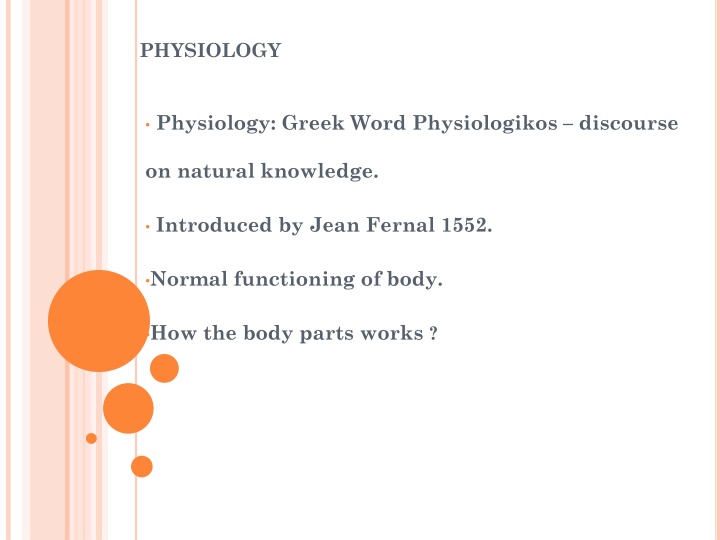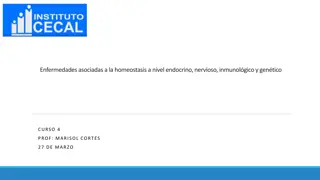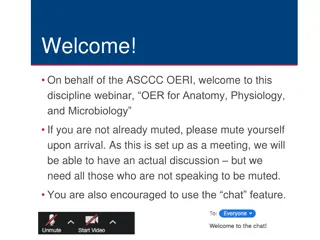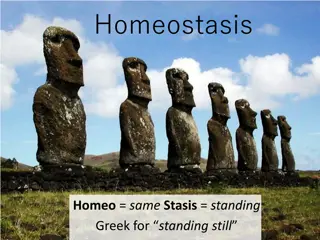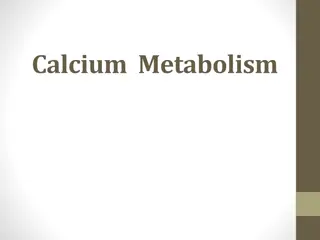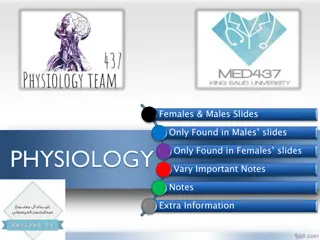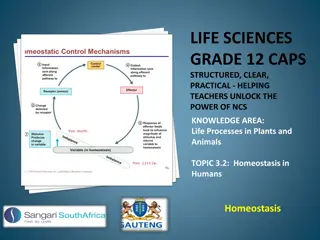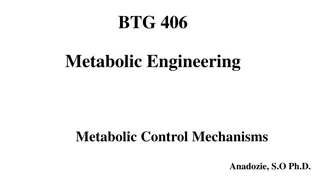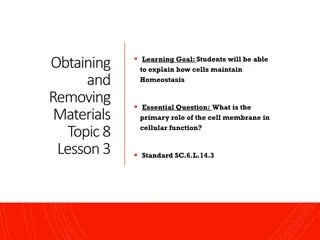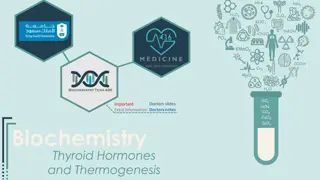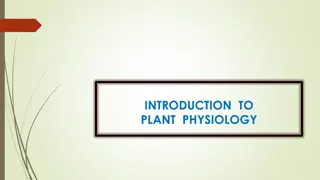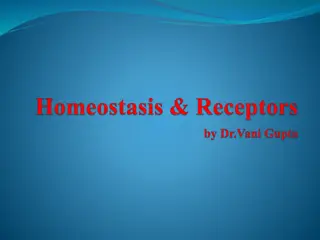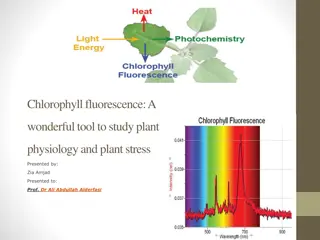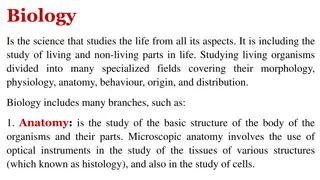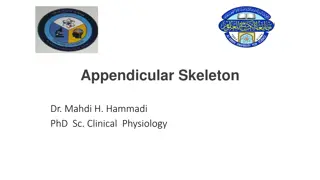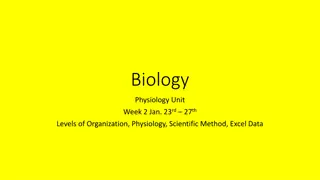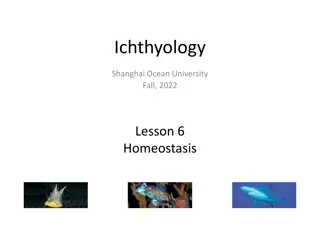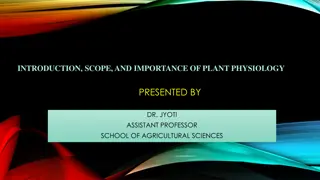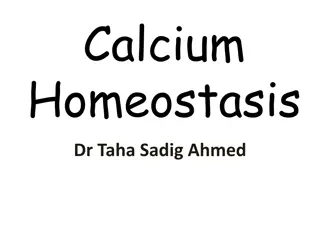Physiology and Homeostasis
Physiology involves studying the normal functioning of body parts, from chemical to organism levels. It encompasses the intricate organization of body structures, characteristics of living organisms, and the essential concept of homeostasis to maintain internal equilibrium. Explore the components and mechanisms of the homeostasis system that regulate the body's internal environment through feedback mechanisms.
Download Presentation

Please find below an Image/Link to download the presentation.
The content on the website is provided AS IS for your information and personal use only. It may not be sold, licensed, or shared on other websites without obtaining consent from the author.If you encounter any issues during the download, it is possible that the publisher has removed the file from their server.
You are allowed to download the files provided on this website for personal or commercial use, subject to the condition that they are used lawfully. All files are the property of their respective owners.
The content on the website is provided AS IS for your information and personal use only. It may not be sold, licensed, or shared on other websites without obtaining consent from the author.
E N D
Presentation Transcript
PHYSIOLOGY Physiology: Greek Word Physiologikos discourse on natural knowledge. Introduced by Jean Fernal 1552. Normal functioning of body. How the body parts works ?
LEVELS OF BODY ORGANIZATION. Chemical level: Atoms- Molecule- Monomers- Polymers. Orgenells Cell: Structural & Functional Unit of Living Body. Tissue: Epithelial, Connective, Muscular, Nervous. Organ: Heart, Kidney. System: CVS, RS Organism: Living Body.
CHARACTERISTICS OF LIVING HUMAN ORGANISM. Metabolism Responsiveness Movement Growth Differentiation Reproduction.
HOMEOSTASIS Homeo = Sameness, Stasis = Standing Still. It is condition of equilibrium in the body s internal environment. Homeostasis was introduced by Walter B. Canon in 1930. ICF ECF: It moves all over body. Interstitial fluid. ECF contains nutrient, ion & all other substance necessary for survival of cell. Healthy life is depends on maintains of internal environment within physiological limit. If internal environment deviates beyond the set limits, body suffers from Homeostasis in body is continually being disturbed. Continue on next page
HOMEOSTASIS Some disruption comes from external environment 7 other distrupation originate in internal environment . Body has many regulating system that usually bring the internal environment back to balance.
COMPONENTS OF HOMEOSTASIS SYSTEM Homeostasis system in body acts through self regulating device which operates in cyclic manner. Normal Deviation Correction Sensor Effector Control Sensor / Dectors / Receptor: which recognize the deviation. Transmission of this message to a control center. Transmission of information from control center to the effector for correcting deviation Effectors which correct the deviation.
MECHANISM OF ACTION OF HOMEOSTASIS SYSTEM. Homeostatic mechanism in body responsible for maintaining the normalcy of various body system. When there is change in body system the effectors bring back the normalcy either by inhibiting & reversing the change or supporting & acceleration. This is achieved by feedback system. 2 types of Feedback system. Negative feedback I. Positive Feedback II.
NEGATIVE FEEDBACK Negative feedback is the one to which system reacts in such way as to arrest change or reverse the direction of change. Inhibition of TSH secretion. Increased secretion decreased secretion of thyroxin of thyroxin Normal level of No deviation Normal level of thyroxin thyroxin decreased secretion of increased level of thyroxin thyroxin Stimulation of TSH Secretion
NEGATIVE FEEDBACK Decreased water Normal water increased water content content content Stimulation of Thirst No deviation No Thirst No Stimulation of osmoreceptor in osmoreceptor in hypothalamus hypothalamus Increased ADH increased in decreased in decreased ADH secretion from water intake water intake secretion from post. Pituitary post. pituitary Increased water Decreased water Retension Normal water Retension by kidney content by kidney
POSITIVE FEEDBACK Positive feedback is the one to which the system react in such way as to increased the intensity of change in same direction. Injury to blood vessels Stoppage of bleeding bleeding Formation of prothrombin activator Conversion of prothrombin into thrombin into fibrin Conversion of fibrinogen
POSITIVE FEEDBACK Onset of Labour Contraction of utreus Movement of fetus into crevix release of oxytocin from hypothalamus Dilation of cervix transmission of impulse to hypothalamus Movement of fetus through crevix Stimulation of receptors Discharge of impulse from in cervix receptor
HOMEOSTATIC IMBALANCE If homeostatic is moderate a disorder or disease may occur. If it is severe death may result. A disorder : any derangement or abnormality of function. Disease: is term for illness characterized by recognizable set of sign & symptoms. Symptoms; a person with disease may experience which are subjective changes in body function. Sign: Objective changes that clinician can observe & measure.
